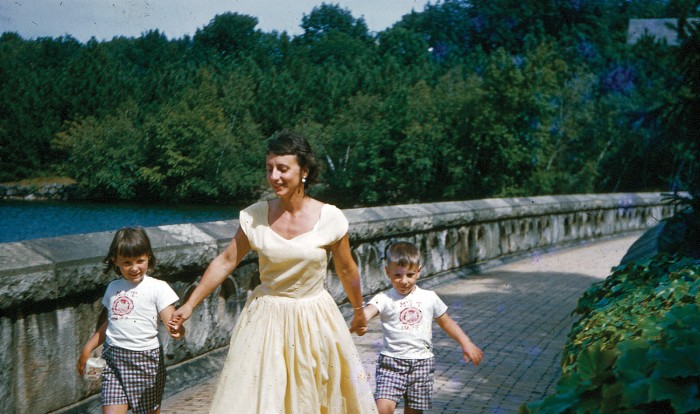As we mark the first century of the Cambridge campus this spring, we celebrate the enduringly practical, innovative, and inspiring buildings that remain the heart of MIT. The marriage of two alumni’s very different visions, the buildings created a large-scale academic information-sharing network in stone. I think of it as the Internet of 1916.
As Mark Jarzombek chronicled in Designing MIT: Bosworth’s New Tech, civil engineer and entrepreneur John Ripley Freeman, Class of 1876, developed early designs for the new campus. Rather than conventional masonry, his plans used reinforced concrete—which, until then, had been used mainly in bridges and factories—to allow for broad windows and reconfigurable interior walls. He also took advantage of electrical lighting to put hallways through the middle of the buildings rather than along outer walls, preserving natural light for classrooms and labs. Most important, he connected the buildings to discourage academic fiefdom-building and let students, faculty, and ideas flow freely between classes and among disciplines.
Although he had the creativity to conceive of the campus as a network, Freeman was dismissive of architects, whom he saw as preoccupied with aesthetics rather than efficiency and function. He oriented MIT’s buildings in an E shape, with the vertical stroke parallel to and abutting what is now Memorial Drive and the three horizontal strokes pointing to Cambridge. All the buildings were of uniform height. From across the Charles, MIT would have looked massive but undistinguished, imposing but uninspired. President Richard Cockburn Maclaurin and his executive committee politely declined Freeman’s proposals.

Maclaurin needed an architect who could address the shortcomings of Freeman’s designs but also incorporate his innovations. Taking the advice of John D. Rockefeller, he hired the architect who had designed AT&T’s headquarters in New York City, William Welles Bosworth, Class of 1889. Unfailingly gracious yet able to stand up to strong-willed clients—qualities that Maclaurin recognized would help him work with Freeman—Bosworth won over Maclaurin in their first meeting.
Trained in the French Beaux-Arts school and inspired by ancient Roman architecture, Bosworth preserved Freeman’s efficiency and innovation but brought in a classical expert to help rethink the design. He changed Freeman’s E plan into a U and turned it toward the Charles River, creating the welcoming expanse of Killian Court. He designed Killian Court to reflect the proportions of the golden rectangle, varied the height of the buildings, and added the Great Dome (Freeman had proposed a smaller dome, hidden from the Charles side). While not exactly a collaboration—Freeman took three months to agree to meet with Bosworth and thereafter used an intermediary to communicate with him—the final result melded the two MIT alumni’s strengths.
Although Bosworth’s dome would become MIT’s landmark and emblem, what ended up directly beneath it helped bring Freeman’s concept of an MIT network to life. In part for budgetary reasons, Bosworth’s final design sited two information “servers”—a library (now Barker Engineering) and an auditorium (room 10-250)—right in the middle of Building 10, making them highly accessible to the entire network of buildings.
Because my mother, Elda Digiuni Chisholm, worked as a librarian in Building 10 from 1945 to 1959, I got a firsthand look at the network and its servers as I was growing up. Mom often wheeled carts of books and scientific journals through the halls among MIT’s libraries, facilitating the flow of information. My sister Jackie and I remember toddling along the Infinite Corridor in the 1950s; that backbone of the MIT network bustled with the heavy traffic of people and ideas then as it did when I was a student in the 1970s.
Over the decades, MIT’s network of buildings has extended through hallways and tunnels. Its next extension will also be a “server”—a 21st-century one. Built in the shadow of the dome, the MIT Nano Lab will serve all in the MIT community who need it, helping to ensure that resources—and ultimately ideas and knowledge—are shared throughout the MIT network.
John Chisholm ’75, SM ’76, CEO of John Chisholm Ventures and author of Unleash Your Inner Company, is president of the MIT Alumni Association.
Keep Reading
Most Popular
Large language models can do jaw-dropping things. But nobody knows exactly why.
And that's a problem. Figuring it out is one of the biggest scientific puzzles of our time and a crucial step towards controlling more powerful future models.
The problem with plug-in hybrids? Their drivers.
Plug-in hybrids are often sold as a transition to EVs, but new data from Europe shows we’re still underestimating the emissions they produce.
Google DeepMind’s new generative model makes Super Mario–like games from scratch
Genie learns how to control games by watching hours and hours of video. It could help train next-gen robots too.
How scientists traced a mysterious covid case back to six toilets
When wastewater surveillance turns into a hunt for a single infected individual, the ethics get tricky.
Stay connected
Get the latest updates from
MIT Technology Review
Discover special offers, top stories, upcoming events, and more.